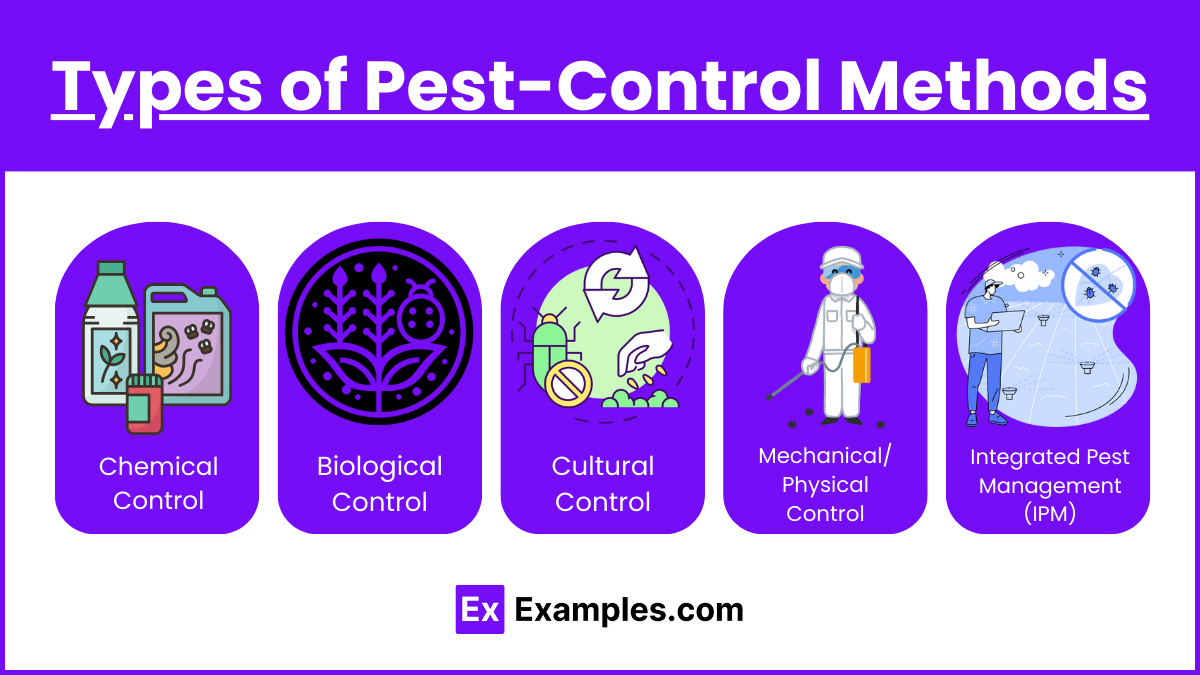The smart Trick of Pestwise That Nobody is Discussing
Table of ContentsMore About PestwiseThe Basic Principles Of Pestwise Facts About Pestwise RevealedThe 7-Minute Rule for PestwiseLittle Known Questions About Pestwise.Little Known Facts About Pestwise.An Unbiased View of Pestwise

Q. Define "integrated pest management" (IPM) and list several feasible control tactics that may be used in an IPM approach. A. Integrated parasite monitoring is the combining of ideal pest control strategies into a solitary strategy to minimize parasites and their damages to an appropriate level. Parasite control techniques may consist of: host resistance, biological control, cultural control, mechanical control, cleanliness, and chemical (chemical) control.
The Main Principles Of Pestwise
What can you do to maintain the pests you are trying to manage from coming to be resistant to the pesticides you utilize? A. Parasite resistance can be reduced by utilizing incorporated insect monitoring and rotating the types of chemicals used.
Bugs are an important threat to the farming company, and incorporated pest management aids cultivators address and mitigate these dangers. Integrated insect administration makes use of several techniques in facility, thus being a more effective service to the problem. Termite Treatment. Particularly, eliminating aggressive chemical techniques enables reducing injury to individuals and the atmosphere by utilizing natural and more secure alternatives rather
The 8-Second Trick For Pestwise
The goal of incorporated bug administration is to minimize this injury and control appropriate invasion levels instead than get rid of all undesirable populaces. This is why it is vital to recognize what measures are warranted in each situation and use hostile ones just when other integrated management methods don't work. Integrated management alleviates the unfavorable effects of a non-IPM technique, and the primary benefits of IPM Advantages of IPM.
A proper understanding of the infestation range figures out if the problem should be dealt with. are the following components of an IPM program because it is crucial to understand if the microorganisms make potential threats and choose the incorporated monitoring choices or the specific chemical use. intend to decrease infestations by applying various agronomic techniques.
Rumored Buzz on Pestwise
Integrated administration alternatives in an IPM program start with much safer to more aggressive ones. The above-mentioned incorporated monitoring facets assist comprehend exactly how to prepare and execute an IPM program step by action: Screen your crops regularly.
Amongst others, IPM cultural techniques consist of the complying with area monitoring techniques: dirt therapy; selection of ideal plants; plant rotation; interplanting or strip chopping; selection of planting days; weed control; usage of trap plants. Favorable dirt problems speed up plant development, and energetic plants are more immune to invasions. Healthy and balanced plants and seeds determine effective crop development, so it is crucial to choose pest-free planting material with strong origins.
Hence, among other applications, plant turning can be properly made use of as an incorporated insect administration approach. Pests spread slower if rows of different plant kinds divide their host plants in intercropping or strip cropping, which is likewise made use of in the integrated bug administration system. Conversely, infestations increase when plants of the same crop type or family members grow together.
Potato beetles can harm growing potatoes, in addition to tomatoes. Growing trap plants in patches is another choice for IPM intercropping. This integrated pest management technique recommends attracting insects to particular plants and after that regulating them with chemical or mechanical techniques. Particularly, you can expand soybeans as catch crops for Japanese beetles.
How Pestwise can Save You Time, Stress, and Money.
Barriers are typical instances of like this physical IPM approaches. Fully grown insects or their eggs and larvae are accumulated by hand and ruined.

Division of Plant Sciences. This integrated administration technique indicates a common way of damaging parasites by predators, parasitoids, microorganisms, and various other organic control agents (also known as antagonistic microorganisms). The role of biological control in IPM is to.
The 7-Minute Rule for Pestwise
With time, their populace turned out to be a genuine annoyance to farmers together with indigenous kangaroos or dingoes. The cane toad is another situation showing integrated biological control failing in this respect when it refused to hunt the target species and came to be a parasite itself. Parasitoids develop on or within their hosts to at some point eliminate them after developing.